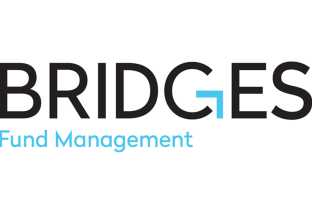For organizations seeking to understand the actions needed to achieve their diversity and inclusion recruiting goals and to communicate their commitment to diversity and inclusion in the recruiting process, there are a lot of questions on how to do this work well. Jennifer Eliason, Associate Director of Diversity, Inclusion, and Belonging at Harvard Business School, offered the following guidance to help organizations understand the metrics that serve as a baseline for diversity and inclusion initiatives and improve institutional processes, programs, and policies.
Numbers and Narratives
First, it is critical that employers committed to diversity and inclusion assess their progress to date. What does the staff compositional data look like when broken out by race, ethnicity, gender, and other personal and cultural identifiers?
“Think about the groups you wish to incorporate in your data, understanding that people are demanding a higher degree of specificity, and provide clear metrics by race and gender,” said Eliason. Avoid reporting numbers in aggregate though; “women and people of color” is too broad of a data point whereas "number of Latinx employees" is specific. Also be sure to incorporate intersectionality. For example, the number of Black women in your organization. These numbers are important indicators for prospective employees considering your organization.
For many organizations, the current data will not be representative of the broader population and it’s important to share findings accurately and acknowledge past errors. “This is not a conversation around public relations; organizations should be transparent and authentic and not overemphasize the diversity and inclusion they have achieved,” said Eliason. She added there is value in telling the story of diversity and equity institutional champions. “There is an opportunity though, to shed light on the individuals within the organization who have been leading the work towards more diversity and inclusion before there were formal processes, programs, and policies.” These narratives offer important insight into the work individuals have undertaken and a bridge to the institutionalization of that work.
Beyond the demographic data, it is also critical for employers to do a systematic review of compensation, promotion, and departure by race/ethnicity and gender. “Prospective employees want to know that you have reviewed employees at the same job band so there isn’t salary inequality around race and gender,” said Eliason. “Also consider who is being promoted within the organization and equity of departures. If you do identify equity problem areas, build a strategy and plan to solve those concerns. Current and prospective employees understand that no organization is perfect, but many are more eager to work for organizations that are actively demonstrating equality as a key priority.”
Mission, Values, and Support
Other important outwardly facing indicators of an organization's commitment to diversity and inclusion are mission statements and the existence of Employee Resource Groups.
Mission statements and company values are often publicly accessible on organizations’ websites. Evaluate if your mission statements include diversity and inclusion and if not, address it. What does your organization stand for and what are you willing to commit to and hold all members of your community accountable for?
Employee Resource Groups (ERGs) are important because they bring individuals together in the workplace based on shared characteristics or life experiences to provide support and enhanced career development. “Organizations should have ERGs by affinity groups, specifically Black, Latinx, Asian/Pacific Islander, women, and LGBTQ. Depending on the nature of the organization, there may be other groups as well such as a group for those with international experience,” Eliason recommended. ERGs demonstrate an organization’s commitment to ensuring employees feel a sense of belonging. Also, in the absence of demographic data — for example, data on sexual orientation — an established ERG broadcasts to potential employees that diversity exists within the organization and is welcomed.
Action and Accountability
Prospective employees will also want to understand the structural and financial commitments your organization is making toward diversity, inclusion, and belonging. “Most people who are deeply passionate about this work and want to make sure the organization is a right fit want an accountability factor. They want to see someone at the organization whose job is diversity and inclusion, and for larger organizations, a group of staff members committed to the work,” said Eliason. The specific job titles will vary for each organization, but the most important factor is institutional authority. Do the individuals charged with diversity and inclusion report to the CEO? Do they have the staffing and budget capacity required to make an impact not only in recruiting but also in creating organizational culture change?”
It's also important for companies to understand individual employees’ lived experiences within the organization. “Institutional commitment to diversity and equity is not only built into policy and action,” Eliason noted, “it is built into culture and climate.” She recommends that organizations do culture and climate surveys every 3 to 5 years and regularly conduct focus groups with staff. Key lessons learned from staffing culture and climate data, as well as organizational next steps for continuous diversity improvement, should be shared with both employees and candidates.
Partnering with external groups to create venues for dialogue development is also an important step towards increasing diversity and inclusion within a workplace as these complex conversations directly address race and racism. “We live in a society where race is taboo and impolite to talk about at work. Also, for many people who are white, they have had the opportunity to opt out of the conversation,” said Eliason. “However, facilitated conversations around racial identity development, cross-racial dialogue, and power and privilege help employees understand their own identity and how race is experienced for others.” Within each industry there are expert groups trained to facilitate these complex conversations, and organizations who invest in bringing in external facilitators can build a higher degree of trust with employees.
Communicating with Candidates at HBS
HBS Recruiting Partners are encouraged to utilize Eliason’s recommendations and include diversity and inclusion in their conversations with students. Data and links can be shared within the Employer Profile in our recruiting platform as well as within job descriptions, event descriptions, and on social media. We look forward to partnering with you in the pursuit of transparency and progress in diversity, inclusion, and belonging to further your success and the success of our students. Make use of 12twenty's Diversity Spotlight feature to detail your organization's diversity, equity, inclusion, and belonging resources and efforts, which students will use to search for organizations of interest.







